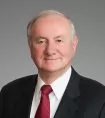1. Higher Thresholds For HSR Filings
On January 15, 2015, the Federal Trade Commission announced revised, higher thresholds for premerger filings under the Hart-Scott-Rodino Antitrust Improvements Act of 1976. The filing thresholds are revised annually, based on the change in gross national product and will be effective thirty days after publication in the Federal Register. Publication is expected within a week, so the new thresholds will most likely become effective in late February 2015. Acquisitions that have not closed by the effective date will be subject to the new thresholds.
The HSR Act notification requirements apply to transactions that satisfy the specified "size of transaction" and "size of person" thresholds. The key adjusted thresholds are summarized in the following chart:
| Size of Transaction Test | Notification is required if the acquiring person will acquire and hold certain assets, voting securities, and/or interests in non-corporate entities valued at more than $76.3 million. |
| Size of Person Test
(Transactions valued at more than $305.1 million are not subject to the Size of Person Test and are therefore reportable) |
Generally one "person" to the transaction must have at least $152.5 million in total assets or annual net sales, and the other must have at least $15.3 million in total assets or annual net sales. |
2. Higher Thresholds For the Prohibition Against Interlocking Directorates
While the filing thresholds have changed, the filing fees have not, but will be based on the new thresholds as follows: $45,000 for transactions valued at more than $76.3 million but less than $152.5 million; $125,000 for transactions valued at more than $152.5 million but less than $762.7 million; and $280,000 for transactions valued at more than $762.7 million. The above rules are general guidelines only and their application may vary depending on the particular transaction.
Higher thresholds for the prohibition in Section 8 of the Clayton Act against interlocking directorates became effective on January 15, 2015. Section 8 prohibits, with certain exceptions, one person from serving as a director or officer of two competing corporations if two thresholds are met. Applying the new thresholds, competitor corporations are covered by Section 8 if each one has capital, surplus and undivided profits aggregating more than $31,084,000, with the exception that the interlock is not prohibited if the competitive sales of either corporation are less than $3,108,400. As with HSR thresholds, the FTC is required to revise Section 8 thresholds annually based on gross national product.
The content of this article is intended to provide a general guide to the subject matter. Specialist advice should be sought about your specific circumstances.


